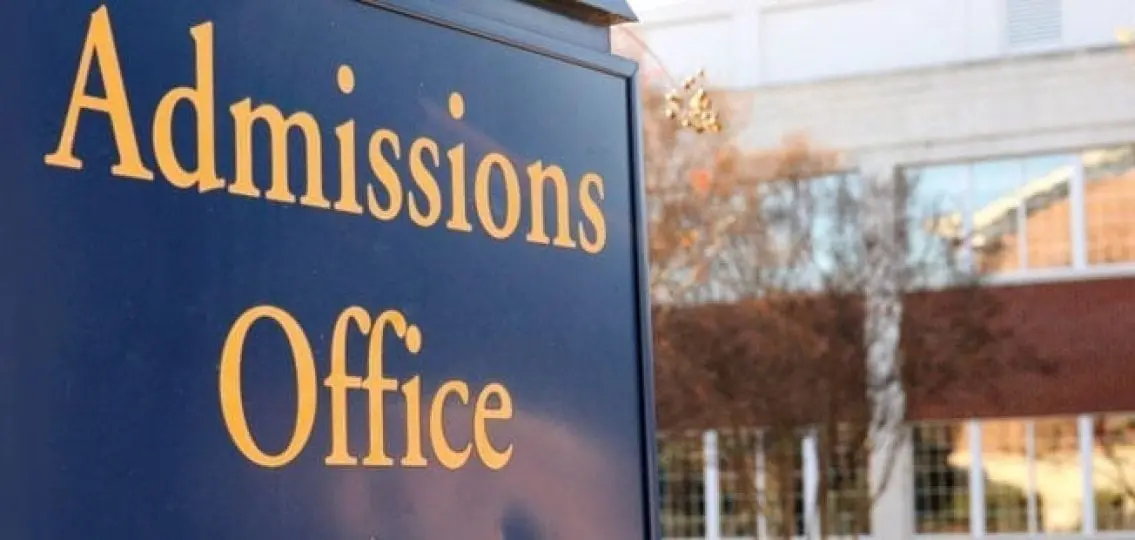The big day has arrived. Your teenager has submitted their college applications, and it’s time to kick back and wait for the results. But for colleges across the country, the work has just begun. In the months following the deadline, college admissions officers work round the clock to decide who gets accepted for next year’s freshman class . . . and who doesn’t.

What happens behind those closed doors? Your Teen decided to find out.
Holistic Admissions Process
Selective public and private institutions have what’s called a “holistic” admissions process. That means staffers are looking at the big picture: transcripts, test scores, essays, recommendations, extracurriculars and whatever else an applicant provides (like a portfolio or interview).
Note that holistic college admissions, academics are still the most important part of the application. A wonderful essay or recommendation won’t get your teenager admitted if his academic record is well below an institution’s benchmarks.
Every application is read at least once. “Parents are concerned that their child won’t get their moment. In my experience, that’s not how it works. Every single student gets a fair evaluation,” notes Rick Bischoff, who currently serves as vice president for enrollment management at Case Western Reserve University.
College admissions staffers from other selective institutions echoed Bischoff’s remarks. “There is no being out of the mix even before you’re in the mix,” explains Catherine Davenport, Vice President of Enrollment and Dean of Admissions at Dickinson College, which received more than 5,000 applications last year for its freshman class of about 600. “Our commitment is to review each application fully.”
After the first read through, applications are triaged into those for immediate acceptance, those for rejection (or deferral or wait-list), and those requiring further consideration, explains Kris Hintz, founder of Position U 4 College. Acceptances tend to be students with “stellar grades, scores, essays, everything. They are way above the college’s benchmarks,” she adds.
[adrotate banner=”31″] Applications requiring further consideration will go either to a second reader or to a committee (or some combination of both) for a final decision. Most of the students still under consideration at this point are qualified to attend, but the admissions staff is trying to put together the optimal freshman class for next fall.
And, yes, it’s a subjective process.
“From our perspective, there’s no magic formula,” Davenport says.
Portfolios and Auditions
And what about specialty colleges, like art or design school or a conservatory program? Not surprisingly, these institutions add portfolios and auditions into the admissions mix. This makes a very different type of college application.
Take the Rhode Island School of Design, which requires students to submit an application (with essays), transcript, test scores, plus a portfolio and two drawing samples (based on prompts developed by the school each year).
“Their visual work is really key to their admission to RISD,” explains Lucy King, former associate director of admissions.
Like their more traditional counterparts, some students are an easy yes, some are an easy no, and a whole bunch of applicants fall in the middle.
“This is the really difficult thing about working for a competitive arts college. Our acceptance rate is about 27 percent, so that means that lots of candidates who are totally qualified to attend aren’t admitted,” King says. “It becomes really hard and frequently, it comes down to interesting factors that may or may not be related to their work.”
This is where the essay, transcript, and even extracurriculars can really come into play. “For example, their work may be really good and maybe they had some interesting activity they were involved in,” King adds. “A person with lower grades and an amazing portfolio may do well at RISD. A person with perfect grades and a less developed portfolio might do well at RISD. And it’s up to us to figure out the balancing point.”
Quantitative Admissions
Meanwhile, even though many institutions have become test optional, some institutions use more of a quantitative approach.
In quantitative college admissions, applicants who hit the right numbers on the SAT or ACT and GPA are automatically admitted, explains Gary Swegan, former associate vice president for enrollment planning and management for Youngstown State University.
“We usually only take a closer look at those students who are ‘on the bubble,'” Swegan says. In these cases, admissions staffers examine more of the applicant’s record, like extracurriculars and recommendations.
While You Wait
So, what, if anything, should your teenager do while she’s waiting? Here’s what college admissions experts recommend:
1. Be in touch (maybe).
Admissions staffers say that they welcome hearing from students. But they prefer when the call is for genuine reasons. Call if you’ve been awarded a prize or given an honor. Other reasons include: improved scores or perhaps landing the lead in the school play.
2. Check your email.
Applicants should also check their email frequently to see whether a school has requested additional information. And, if your student is wait-listed, staffers say an email demonstrating continued interest—and reiterating why—can help.
3. Don’t take the process personally.
It’s hard not to take the process personally, especially if it ends in rejection. But college admissions officers stress that applicants should try not to. For starters, at many selective institutions, many more applicants are rejected than admitted. And admissions officers will be the first to say that admissions varies from year to year. A student who gets in one year may not have gotten in the year before—or vice versa.
Secondly, there are factors at work that are not in your teenager’s control, no matter their transcript. For example, colleges are trying to put together diverse student bodies. This includes gender and race, but also geography, interests (including major), and talents. If an admissions committee has already let in 20 students from the East Coast whose passion is theater, then your theater-loving teenager from the East Coast may be out of luck at that school.
Institutional considerations are another part of the equation. Legacy may be a factor. So you may lose to another applicant who’s parent attended that school. Sports may be a factor. Your teenager may be out of luck when compared to an applicant being recruited for an athletic team.

“There are three people you want to take to prom, but you can only take one,” says Bischoff. “You have to make a choice.”




